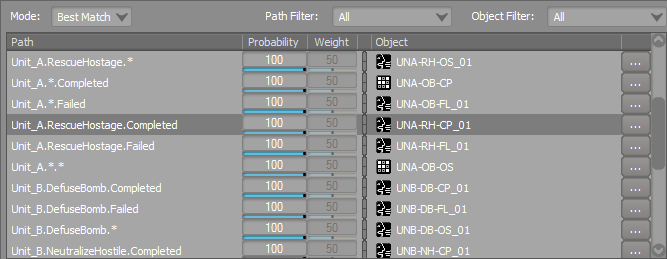バージョン
Dynamic dialogue is a flexible tool for creating responses on the fly. These responses are determined through a decision-tree structure that selects audio based on multiple game conditions. The example of dynamic dialogue provided with the sample project shows how to implement dialogue functionality in a game that uses game variables to trigger the particular sentences. Dynamic Dialogue is particularly well suited to create play-by-play for sports games, but any game genres could see advantages to use this system. It can also be used for SFX in situations where large hierarchies are needed like footsteps structures for example.
In this project, in the Objective_Status Dialogue Event example, a series of arguments and arguments values has been created to reflect multiple game situations and outcomes. These arguments create a matrix of argument paths that can be triggered at any moment by the player’s radio call to the police officers.
 |
In this project, in the Objective_Status Dialogue Event example, a series of arguments and arguments values has been created to reflect multiple game situations and outcomes. These arguments create a matrix of argument paths that can be triggered at any moment by the player’s radio call to the police officers.
 |
In this game, each time a police officer responds to the player, the game triggers the “Objective_Status” Dialogue Event while setting the actual argument values. Consequently, the object associated with the argument path, either a voice object or a container holding sound objects, is heard. This example doesn’t take advantage of the Probability and Weighting tools, but you can use them in your game to have more control over which piece of audio is played, if any.